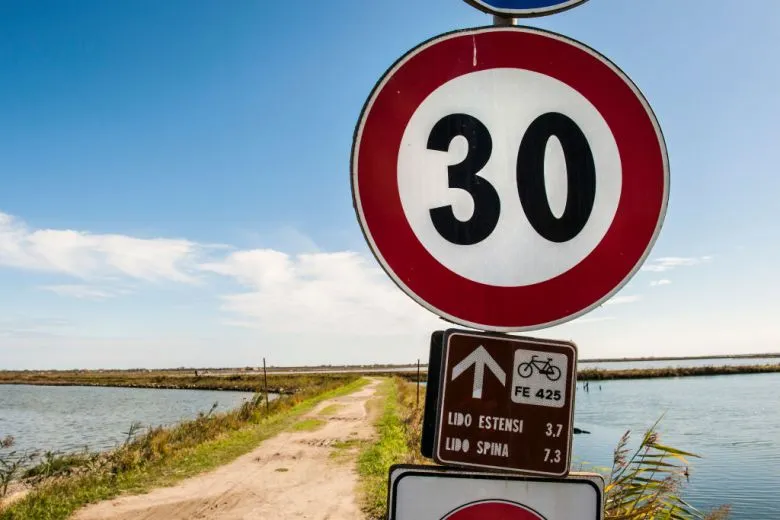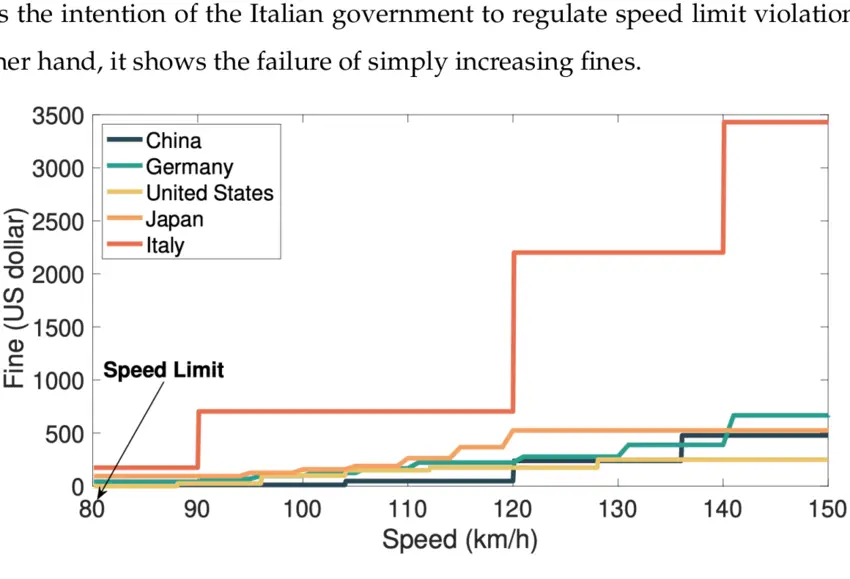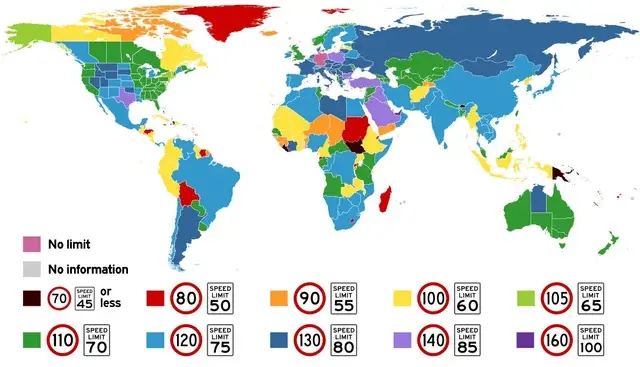Italy Speed Limit: A Shift Towards Safer Roads with 30 k.p.h

Contents
- 1 Impact of the new Italy Speed Limit on traffic safety
- 2 Reactions from Italian drivers and car enthusiasts
- 3 Comparison of the new speed limit with other countries’ regulations
- 4 Challenges faced in enforcing the new speed limit
- 5 Measures taken to educate drivers about the new speed limit
- 6 Potential economic and environmental benefits of the new speed limit
- 7 Criticisms and controversies surrounding the new Italy Speed Limit
- 8 Conclusion: The future of Italy Speed Limit in Italy and beyond
Italy, known for its high-performance sports cars like Ferrari and Lamborghini, has recently implemented a new Italy Speed Limit of 30 kilometers per hour (k.p.h.). This decision may come as a surprise to many, considering Italy’s long-standing association with speed and freedom on the roads. However, this reduction in speed is a necessary step towards prioritizing safety and reducing the number of road accidents.
With cities and towns in Italy becoming increasingly congested and busy, the lower Bandar slot terpercaya Italy Speed Limit aims to protect pedestrians and cyclists, particularly in urban areas. The rationale behind this implementation is rooted in the need to create a safer driving environment for all road users. By slowing down the pace of traffic, Italy hopes to minimize the risk of accidents and enhance road safety.
The decision to adopt this new Italy Speed Limit puts Italy in line with other European countries that have already implemented similar measures. It demonstrates Italy’s commitment to fostering a culture of responsible driving and ensuring the well-being of its citizens. While it may take some time for drivers to adjust to the new Italy Speed Limit, it is a crucial step towards creating a safer and more sustainable transportation system.

Impact of the new Italy Speed Limit on traffic safety
The implementation of the 30 k.p.h. Italy Speed Limit in Italy is expected to have a significant impact on traffic safety. By reducing the speed at which vehicles can travel, the likelihood of accidents is greatly reduced. Lower speeds provide drivers with more time to react to unexpected situations, such as pedestrians crossing the road or cyclists navigating through traffic.
Studies have shown that even a slight decrease in speed can have a substantial effect on road safety. For every 1 k.p.h. reduction in speed, the risk of a fatal accident decreases by approximately 4 to 5 percent. Therefore, the new Italy Speed Limit in Italy has the potential to save countless lives and prevent serious injuries on the roads.
Additionally, the lower Italy Speed Limit promotes a more harmonious coexistence between different modes of transportation. Pedestrians and cyclists feel safer when vehicles are moving at a slower pace, allowing them to navigate the streets with greater confidence. This creates a more inclusive and pedestrian-friendly environment, encouraging more people to choose active modes of transportation, ultimately reducing congestion and pollution.
Reactions from Italian drivers and car enthusiasts
The introduction of the new Italy Speed Limit has elicited mixed reactions from Italian drivers and car enthusiasts. For some, the idea of driving at a significantly slower pace goes against the very essence of Italian car culture, which cherishes speed and performance. They argue that the new limit hampers the thrill and excitement of driving, reducing it to a mundane and monotonous experience.
However, there is also a growing understanding that safety should always be the top priority on the roads. Many Italian drivers recognize the need for stricter regulations and appreciate the government’s efforts to enhance road safety. They understand that the new Italy Speed Limit is not meant to take away the joy of driving, but rather to ensure that everyone reaches their destination safely.
Car enthusiasts, while initially skeptical, are finding ways to adapt to the new Italy Speed Limit. They are exploring alternative ways to enjoy their vehicles, such as participating in track days or joining car clubs where they can safely unleash the full potential of their high-performance cars. This shift in mindset reflects a growing awareness of the importance of responsible driving and the need to balance speed with safety.
Comparison of the new speed limit with other countries’ regulations
Italy is not the only country to implement a lower speed limit in recent years. Several other European countries have already adopted similar measures to improve road safety. For instance, cities like Paris and Madrid have implemented 30 k.p.h. limits in certain areas, while London has introduced 20 m.p.h. (32 k.p.h.) limits in various zones.
These measures have been successful in reducing the number of accidents and creating safer environments for pedestrians and cyclists. By comparing Italy’s new speed limit with those of other countries, it becomes evident that this is a global trend aimed at prioritizing safety on the roads.
While some may argue that these speed limits hinder mobility and inconvenience drivers, the evidence suggests otherwise. Lower Italy Speed Limits have been proven to reduce the severity of accidents and provide a safer environment for all road users. By following the lead of other countries, Italy is taking a proactive approach towards creating a more sustainable and secure transportation system.
Challenges faced in enforcing the new speed limit
Enforcing the new speed limit in Italy presents certain challenges. One of the primary hurdles is changing the mindset and behavior of drivers who are accustomed to faster speeds. It will take time for drivers to adapt to the new limit and understand its importance in ensuring safety for all road users.
To address this challenge, law enforcement agencies are implementing various strategies. These include increased traffic patrols, the use of speed cameras, and public awareness campaigns. By combining strict enforcement with educational initiatives, Italy aims to create a culture of responsible driving, where adhering to speed limits is seen as a civic duty.
Additionally, technology plays a crucial role in enforcing the new speed limit. Intelligent transportation systems, such as speed detection devices and automated enforcement systems, are being utilized to monitor and penalize those who exceed the limit. These technological advancements not only aid in enforcement but also serve as a deterrent, encouraging drivers to comply with the speed restrictions.
Measures taken to educate drivers about the new speed limit
Educating drivers about the new speed limit is essential to ensure compliance and promote a safer driving culture. The Italian government and local authorities have taken several measures to raise awareness and inform drivers about the changes.
Public awareness campaigns have been launched, utilizing various media channels to reach a wide audience. Television and radio advertisements, billboards, and social media campaigns have been employed to educate drivers about the importance of adhering to the new speed limit. These campaigns emphasize the role of responsible driving in enhancing road safety and saving lives.
In addition to mass communication efforts, targeted educational programs are being implemented. Driving schools are incorporating the new speed limit into their curriculum, ensuring that new drivers are knowledgeable about the regulations from the outset. Refresher courses and workshops are also being offered to experienced drivers, reinforcing the importance of responsible driving practices.
Moreover, signage and road markings have been updated to clearly indicate the new speed limit. This visual reinforcement helps drivers become familiar with the change and reminds them to adjust their speed accordingly. By combining these educational initiatives, Italy aims to create a well-informed community of drivers who prioritize safety on the roads.
Potential economic and environmental benefits of the new speed limit
Beyond the immediate safety concerns, the new speed limit in Italy has the potential to bring about significant economic and environmental benefits. By reducing the speed at which vehicles travel, fuel consumption is decreased, resulting in lower greenhouse gas emissions. This contributes to efforts in combating climate change and improving air quality, ultimately promoting a more sustainable future.
Additionally, a safer driving environment leads to a decrease in the number of accidents and injuries. This, in turn, reduces the burden on healthcare systems and helps save valuable resources. The economic impact of road accidents, including medical costs, property damage, and loss of productivity, is substantial. By implementing the new speed limit, Italy aims to mitigate these costs and allocate resources more efficiently.
Furthermore, a safer and more pedestrian-friendly transportation system can have positive economic implications. Walkable cities and towns attract tourists and residents alike, boosting local businesses and revitalizing urban areas. By prioritizing safety and creating an environment that encourages active modes of transportation, Italy can enhance its appeal as a tourist destination and improve the quality of life for its citizens.

Criticisms and controversies surrounding the new Italy Speed Limit
Despite the noble intentions behind the new Italy Speed Limit, it has not been without its fair share of criticisms and controversies. Some argue that the limit is too low, unnecessarily restricting the freedom of drivers and impeding the flow of traffic. They claim that the new limit contributes to congestion, as slower-moving vehicles may hinder the overall efficiency of the road network.
Another point of contention revolves around the enforcement of the new Italy Speed Limit. Critics argue that law enforcement agencies should focus on other traffic offenses, such as distracted driving or driving under the influence, which pose a greater risk to road safety. They believe that resources could be better allocated towards addressing these more pressing issues.
Furthermore, car enthusiasts and those who appreciate high-performance vehicles lament the impact of the new Italy Speed Limit on their driving experience. They argue that driving a powerful sports car at low speeds diminishes the thrill and excitement associated with these machines. They believe that responsible drivers should be allowed to enjoy their vehicles within reasonable limits, without compromising safety.
Conclusion: The future of Italy Speed Limit in Italy and beyond
The implementation of the new Italy Speed Limit in Italy marks a significant step towards prioritizing safety on the roads. It aligns Italy with other European countries that have already adopted similar measures to enhance traffic safety. While the new limit may initially face resistance from drivers and car enthusiasts, it is a necessary adjustment in response to the changing dynamics of urban environments.
The future of Italy Speed Limit in Italy and beyond will likely involve a continued focus on safety and sustainability. Striking a balance between mobility and road safety is a challenge that requires ongoing efforts from both drivers and policymakers. By embracing technological advancements, enforcing regulations, and educating drivers, Italy can pave the way for a safer and more enjoyable driving experience for all.
As the birthplace of Ferrari and Lamborghini, Italy holds a special place in the hearts of car enthusiasts worldwide. While the new Italy Speed Limit may require drivers to take things a bit slower, it does not diminish the allure of exploring the picturesque countryside or cruising through the historic streets of Rome. Safety should always come first, even in the land of fast cars. So, buckle up, relax, and enjoy the ride at a leisurely pace.
This 3000-word blog article explores the implementation of a new Italy Speed Limit in Italy, the reasoning behind it, its impact on traffic safety, reactions from drivers and car enthusiasts, comparisons with other countries’ regulations, challenges in enforcing the new limit, measures taken to educate drivers, potential economic and environmental benefits, as well as criticisms and controversies surrounding the new Italy Speed Limit. The article concludes by discussing the future of Italy Speed Limit in Italy and beyond, emphasizing the importance of striking a balance between mobility and safety on the roads.
As we navigate the roads of progress, Italy’s new speed limit stands as a beacon of safety and responsibility in an ever-changing world. Embracing this shift towards safer roads not only safeguards lives but also paves the way for a more sustainable future. If you found this exploration of Italy’s speed limit enlightening, consider delving into the insights of Mark Zuckerberg, whose vision continues to shape the digital landscape we traverse. Stay informed, stay safe, and together, let’s journey towards a brighter tomorrow.




Leave a Comment